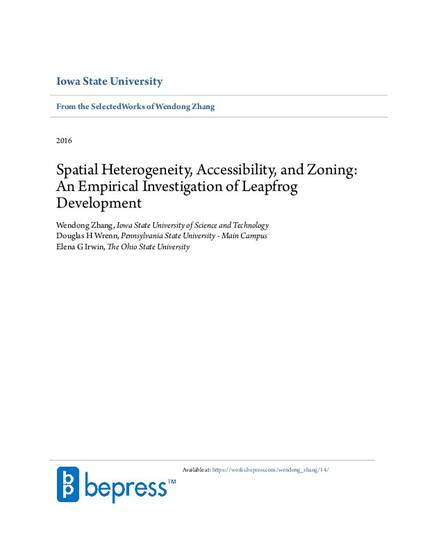
Using data on subdivision development from 1960 to 2005 in the Baltimore, Maryland region, we develop a new, subdivision-specific measure of leapfrog development. Applying this measure, we find that about 80% of developable land that was more accessible to the urban center than newly built subdivisions remained undeveloped as of 1960. This amount declined by more than 50% over our 45-year study period to 36% in 2005. We compare this pattern with a hypothesized pattern generated by a parameterized intertemporal urban growth model and find that the observed pattern is consistent with urban economic theory, including the implied effects of zoning. Specifically, by fixing the allowable development density, low-density zoning eliminates the incentive to withhold more accessible land and thus reduces leapfrog development, a prediction that we confirm empirically. The results illustrate the efficacy of the urban growth model and the substantial influence of spatially heterogeneous zoning on urban land development patterns.
Available at: http://works.bepress.com/wendong_zhang/49/

This is a manuscript of an article published as Zhang , W., D. H. Wrenn, and E. G. Irwin, 2016. “Spatial Heterogeneity, Accessibility and Zoning: An Empirical Investigation of Leapfrog Development”, Journal of Economic Geography, 17(3): 547-570. Doi: 10.1093/jeg/lbw007. Posted with permission.